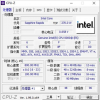Even if the CPU is closer than it looks they'll be behind on the battery life and iGPU department, and not by a small bit. AMD is claiming 30% battery life improvement gen-on-gen? That's an insane lead! Right now Tigerlake leads a bit on video playback and uses little more power in browsing. Video playback they were claiming 30-40% reduction or something which will get ahead of TGL.
The web browsing gains are really, really good. TGL is not that efficient. There's a notebookreview thread about optimizing battery life and you can get Cometlake-U to be lower power.
The 20-30% gain in battery life for RMB cuts the fundamental battery life differences between x86 and ARM laptops by about half. Great job on them! I thought I'd see that with Lakefield!
Where exactly is a 30% battery life improvement being claimed? From AMD's own press release there are two specific claims:
(From https://www.amd.com/en/press-releas...bile-processors-uniting-zen-3-core-amd-rdna-2 )Compared to last-generation AMD Ryzen processors, the AMD Ryzen 6000 Series processors can use up to 30% less power for video conferencing.4 This results in incredible battery life with Ryzen 6000 Series processors achieving up to 24 hours of movie playback on a single charge5, all in a cool, quiet laptop.
The first one is the 30% figure being referenced I presume? In which case note that the claim is that the processors can use up to 30% less power, not the system. Page 8 of this AMD presentation comparing the 4000 series mobile to 5000 series illustrates the difference, and in that case how battery life can increase more than the power reduction in the processor - https://www.amd.com/system/files/documents/battery-life-whitepaper.pdf
The second important claim there is up to 24 hours of movie playback on a single charge. They don't provide a direct comparison to the 5000 series mobile here, and for good reason. Their 5000 series mobile announcement from a year ago - https://www.amd.com/en/press-releas...rld-s-best-mobile-processors-ces-2021-keynote - claimed 21 hours. A 14% improvement is still good no question, but it's not in line with the rest of their narrative. And again, not all of that improvement may be due to reduced processor power consumption as evidenced by their 4000 series to 5000 series battery life comparison.
What I'm currently more interested in is how ADL will compare to TGL in battery life. Substantive claims on that aspect were suspiciously absent in Intel's announcements. There are obviously going to be improvements compared to TGL, but to what extent will have to wait for reviews I guess.
Oh, and no question that AMD is going to be enjoying integrated graphics superiority for quite some time. I'm sure Intel will eventually catch up, but in the interim it's a notable advantage for those markets which care about such. (Which is itself a good point - AMD's single die strategy puts them at a notable cost disadvantage for quite possibly a majority of the laptop market that doesn't care about graphics performance/8 CPU cores.)











